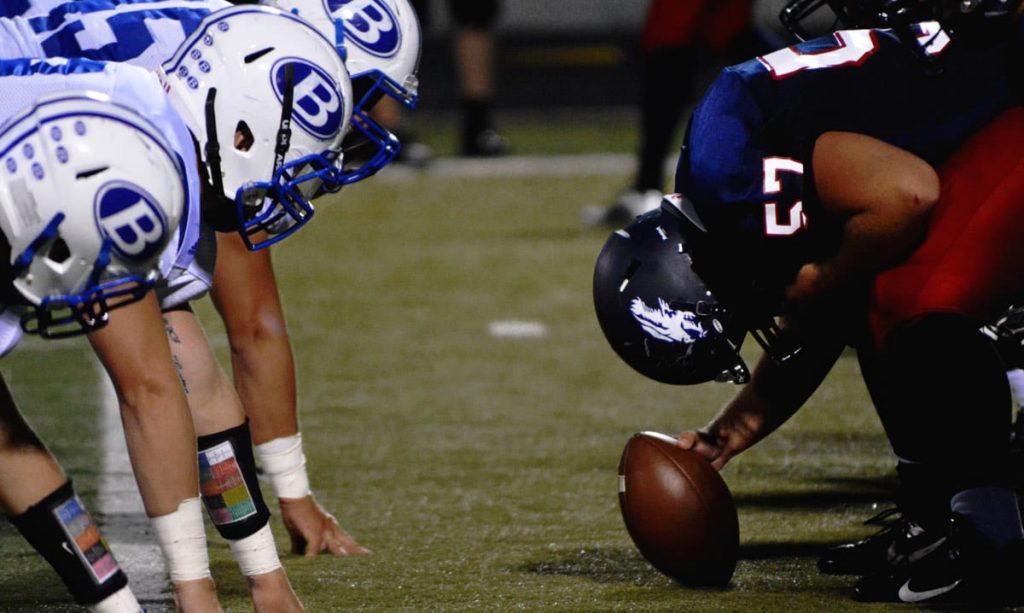Concussions occur when the brain hits the inside surface of the skull. This sudden impact makes the brain “dance” inside the skull and, in so doing, nerves and/or tiny blood vessels may get damaged. About 90% of concussions do not lead to loss of consciousness and MRIs or CAT Scans taken after the impact will not necessarily show any signs that the brain is concussed. Thus, the importance of listening to what the athlete reports and to what is observed by an outsider after the impact.
Symptoms Reported by Athlete
- Headache or “pressure” in head
- Nausea or vomiting
- Balance problems or dizziness
- Double or blurry vision
- Sensitivity to noise
- Concentration or memory problems
- Confusion
- Does not “feel right”
Signs observed by Coaching Staff
- Appears dazed or stunned
- Forgets sports plays
- Moves clumsily
- Answers questions slowly
- Loses consciousness (even briefly)
- Unsure of game, score or opponent
- Can’t recall event prior to hit or fall
Also, it is important that symptoms be taken seriously, and athletes be immediately removed from the field. The athlete will greatly benefit from being examined by a professional, who will run an Impact Test to determine the severity of the hit. Research shows that athletes who are removed from the sport immediately after being hit tend to return to the game within two weeks, while those who delay reporting symptoms do not return for 70 days or longer. Again, loss of consciousness is rarely a sign of whether a person is concussed or not.
About 33% of concussions take place during practice and 1 out of 5 high school athletes will sustain a sports concussion during the season. Although football is, by far, the sport where the most concussions occur, female athletes who practice dual-gender sports are more likely to report a concussion than males. For example, soccer, basketball, field hockey, and volleyball report greater number of concussions for female high school athletes. There are two possible reasons to explain these data: 1) males are more likely to minimize or avoid reporting symptoms; 2) female’s physical relationship between head and neck girth makes them more likely to experience an abrupt head movement.
Rest is extremely helpful, not only to allow the brain to settle down, but also for many of the physiological components of the body to return to normal functioning. Although each case is different, research indicates that about 50% of athletes feel well enough to return to learn/compete after 14 days. About 18% of athletes remain symptomatic after 28 days, a condition known as post-concussion syndrome. Often, a head impact is simultaneously accompanied by an array of emotions, which are the results of the athlete’s responses to the day-to-day healing experience. The high impact suddenly brings a cocktail of emotions, such as irritability, anxiety, depression, mood swings, anger, and frustration, just to mention a few. The athlete’s fears of being replaced and potentially missing out on being recruited to a college of his/her dreams may lead to feeling intense emotions. Athletes are not used to sitting back and resting. They are used to running a full schedule from practice to competition. Hence, staying home can be frustrating.
While supervised, athletes will benefit by slowly integrating activities that draw on the need to focus. If symptoms that were experienced early after the injury are worse with exertion, but improved with rest, then the original concussion is the likely reason for the persisting symptoms; but if the ongoing symptoms are made worse by even minimal exercise and no longer respond to rest, it may represent psychological symptoms related to prolonged inactivity and frustration with inability to return to usual activities, including sports.1
Remember, rest, rest and more rest. After an injury, the brain is in need of much rest, as it was subjected to an unexpected impact and repair takes place when resting. If mental health symptoms remain, then addressing them will greatly benefit the brain’s recovery from trauma. Also, make sure you are using a team healing approach, which includes a neurologist, physical therapist, speech therapist, coaches, athletic trainers, and nurses. The greater the support network, the better the quality of care and the sooner the athlete will be back to competition and school.
As a Somatic Psychology trained professional, I completed my doctoral degree focusing on athletes and body awareness to enhance performance. Athletes, for the most part, tend to overly rely on thinking to help them manage emotions, but it is the implicit memory (how the body senses memories: butterfly in the belly, overly anxious, choking, etc.) that first inputs to the brain. Concussions keep emotional experiences at an implicit level. When applying a therapeutic model that addresses how to work with implicit memories, the nervous system can reach a restoring state. Coaching from a somatic-based knowledge base has helped clients find coping skills that not only restore past experiences, but also develop coping skills for multiple situations, like SATs and life skills in general.
1. Neurometabolic indicators of mitochondrial dysfunction in repetitive mild traumatic brain injury. Kim, Han, Gallan, & Hayes. 2017
If you or someone you know experiences mental health issues, it is important to seek help from a qualified professional. Our Resource Specialist can help you find expert mental health resources to recover in your community. Contact us now for more information on this free service to our users.
Author Bio: Alex Diaz, PhD, LCSW is a licensed professional in private practice providing counseling to children, adolescents, adults and families. Dr. Diaz integrates cognitive behavioral therapy (CBT), mindfulness, and neuroscience-based practices to alleviate stress, anxiety, depression, as well as enhance peak performance in athletes and students taking SATs.
Additionally, Dr. Diaz is the Sport Psychology Consultant for Concordia College, NY. He teaches strategies to enhance mental focus and overcome distractions. Dr. Diaz also works with athletes and non-athletes seeking relief from post-concussion symptoms. He is a certified Peak Performance Coach working with school, collegiate, professional, and Olympic athletes as well as non-athlete individuals. His office is located in Tuckahoe, NY and he is also available via Skype.
Dr. Diaz is also a featured provider in rtor.org’s Directory of Family Endorsed Providers. You can find out more about sport psychology and Dr. Diaz’s practice in this area on his website sportsmentaledge.com.
Photo by Nathan Shively on Unsplash
The opinions and views expressed in this guest blog do not necessarily reflect those of www.rtor.org or its sponsor, Laurel House, Inc. The author and www.rtor.org have no affiliations with any products or services mentioned in this article or linked to herein.
Recommended for You
- The Truth about Relapse in Addiction Recovery - April 14, 2025
- The Power of Peer Support in Mental Health Recovery - April 10, 2025
- Artificial Intelligence in Anxiety Management: How AI Helps Users Cope with Anxiety Symptoms - April 3, 2025





